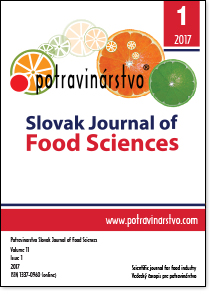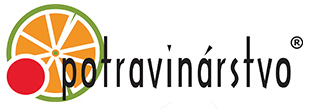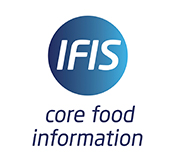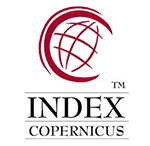Effect of short-term consumption bitter apricot seeds on the body composition in healthy population
DOI:
https://doi.org/10.5219/718Keywords:
cardiovascular diseases, bitter apricot seeds, body fat, visceral adipose tissue, bioelectrical impedanceAbstract
The distribution of fat in different areas of the body is important since accumulation of fat within the abdominal cavity represents a much more severe cardiovascular risk than accumulation in subcutaneous adipose tissues. Apricot seeds contain a wide variety of bioactive compounds and that consumption can decrease blood pressure and total blood cholesterol levels, fight oxidative stress and maintain body weight. The aim of the study was to analyse body composition: body fat mass (BFM), fat free mass (FFM), skeletal muscle mass (SMM), body fat percentage (%BFM), visceral fat area (VFA), total body water (TBW) - intracellular water (ICW) and extracellular water (ECW) and to evaluate the changes that occur after 6-weeks consumption of bitter apricot seeds. The study group finally consisted of 34 healthy adults volunteers (21 females and 13 males). Volunteers were recruited from the general population of Slovakia. Respondents were 23 - 65 years old, where the average age of women was 40.65 ±11.31 years and the average age of men was 36.91 ±9.98 years. All participants were asked to consume 60 mg.kg-1 of body weight of bitter apricot seeds daily during 6 weeks. Body composition was diagnosed by multi-frequency bioelectrical impedance analysis (MFBIA) by InBody 720 (Biospace Co., Korea), which measures the total impedance at frequencies of 1, 5, 50, 100, 500, 1000 kHz. At baseline mean body weight was 85.78 ±14.66 and 62.84 ±12.19 kg in the male and female participants, respectively. After 6 weeks of consumation we observed non-significant decreasing of mean body weight. The mean BFM was 19.25 ±8.81 kg in the male group and 19.47 ±7.21 kg in the female group. After six weeks, BFM decreased non-significantly (on average 0.5 kg) in both groups. The mean FFM at baseline was 43.37 ±5.98 and 66.54 ±7.98 kg in the female and male participants, respectively. The statistical analysis confirmed that the increase of FFM (43.37 ±5.98 kg to 43.56 ±5.80 kg) in the female were statistically significant (p <0.05). VFA was greater in the men (82.04 ±39.82 cm2 at baseline and 78.65 ±39.79 cm2 after 6 weeks) comparison to women (79.82 ±29.03 cm2 at baseline and 78.29 ±29.90 cm2 after 6 weeks). The mean of TBW in males before the start of study was 48.78 ±5.77 kg and 47.88 ±5.57 kg after 6 weeks of consumption. The results of study show the small weight loss in the both group. Therefore, the results from this study indicate that daily consumption of bitter apricot seeds produce measurable health benefits, but further studies are also required.
Downloads
Metrics
References
Bensky, D., Clavey, E., Stöger, E. 2004. Chinese Herbal Medicine: Materia Medica. 3rd ed. Seattle : Eastland Press. p. 437-440. ISBN-13: 978-0939616824.
Borrud, L. G., Flegal, K. M., Looker, A. C., Everhart, J. E., Harris, T. B., Shepherd, J. A. 2010. Body composition data for individuals 8 years of age and older: U.S. population, 1999 – 2004. Vital and Health Statistics Series, vol. 250, no. 11, p. 1-87.
Böttcher, Y., Körner, A., Kovacs, P., Kiess, W. 2012. Obesity genes: implication in childhood obesity. Paediatrics and Child Health, vol. 22, no. 1, p. 31-36. https://doi.org/10.1016/j.paed.2011.08.009 DOI: https://doi.org/10.1016/j.paed.2011.08.009
Britton, K. A., Massaro, J. M., Murabito, J. M., Kreger, B. E., Hoffmann, U., Fox, C. S. 2013. Body fat distribution, incident cardiovascular disease, cancer, and all-cause mortality. Journal of the American College of Cardiology, vol. 62, no. 10, p. 921-925. https://doi.org/10.1016/j.jacc.2013.06.027 PMid:23850922 DOI: https://doi.org/10.1016/j.jacc.2013.06.027
Brunzell, J. D., Davidson, M., Furberg, C. D., Goldberg, R. B., Howard, B. V., Stein, J. H., Witztum, J. L. 2008. Lipoprotein management in patients with cardiometabolic risk: Consensus conference report from the American Diabetes Association and the American College of Cardiology Foundation. Journal of the American College of Cardiology, vol. 51, no. 15, p. 1512-1524. https://doi.org/10.1016/j.jacc.2008.02.034 PMid:18402913 DOI: https://doi.org/10.1016/j.jacc.2008.02.034
Charakida, M., Finer, N. 2012. Drug treatment of obesity in cardiovascular disease. American Journal of Cardiovascular Drugs, vol. 12, no. 2, p. 93-104. https://doi.org/10.2165/11599000-000000000-00000 PMid:22292446 DOI: https://doi.org/10.2165/11599000-000000000-00000
Carpentier, Y. A., Komsa-Penkova, R. S. 2011. Clinical Nutrition University. The place of nutrition in the prevention of cardiovascular diseases (CVDs). European e-Journal of Clinical Nutrition and Metabolism, vol. 6, no. 6, p. 272-282. https://doi.org/10.1016/j.eclnm.2011.10.002 DOI: https://doi.org/10.1016/j.eclnm.2011.10.002
DeLorenzo, A., DelGobbo, V., Bigioni, M., Galvano, F., DiRenzo, L. 2007. Normal-weight obese syndrome: early inflammation? American Journal of Clinical Nutrition, vol. 85, no. 1, p. 40-45. DOI: https://doi.org/10.1093/ajcn/85.1.40
Gaziano, T. A., Bitton, A., Anand, S., Abrahams-Gessel, S., Murphy, A. 2010. Growing epidemic of coronary heart disease in low- and middle-income countries. Current Problems in Cardiology, vol. 35, no. 2, p. 72-115. https://doi.org/10.1016/j.cpcardiol.2009.10.002 DOI: https://doi.org/10.1016/j.cpcardiol.2009.10.002
Gába, A., Pelclová, J., Přidalová, M., Riegerová, J., Dostálová, I., Engelová, E. 2009. The evaluation of body composition in relation to physical activity in 56-73 y. old women: A Pilot study. Acta Universitatis Palackianae Olomucensis. Gymnica, vol. 39, no. 3, p. 21-30.
Gomez, E., Burgos, L., Soriano, C. 1998. Amygdalin content in the seeds of several apricot cultivars. Journal of the Science of Food and Agriculture, vol. 77, no. 2, p. 184-186. https://doi.org/10.1002/(SICI)1097-0010(199806)77:2<184::AID-JSFA22>3.0.CO;2-H DOI: https://doi.org/10.1002/(SICI)1097-0010(199806)77:2<184::AID-JSFA22>3.0.CO;2-H
Greenstein, A. S., Khavandi, K., Withers, S. B., Sonoyama, K., Clancy, O., Jeziorska, M., Laing, I., Yates, A. P. Pemberton, P. W., Malik, R. A. Heagerty, A. M. 2009. Local inflammation and hypoxia abolish the protective anticontractile properties of perivascular fat in obese patients. Circulation, vol. 119, no. 12, p. 1661-1670. https://doi.org/10.1161/CIRCULATIONAHA.108.821181 DOI: https://doi.org/10.1161/CIRCULATIONAHA.108.821181
Hamdy, O. 2005. The role of adipose tissue as an endocrine gland. Current Diabetes Reports, vol. 5, no. 5, p. 317-319. https://doi.org/10.1007/s11892-005-0086-0 DOI: https://doi.org/10.1007/s11892-005-0086-0
Heyward, V. H., Wagner, D. R. 2004. Applied body composition assessment. 2nd ed. Champaign, IL : Human Kinetics. 280 p. ISBN-13: 9780736046305.
Koycu, A., Aydin, E., Kinik, S. T. 2016. Changes in body composition and grpwth pattern after adenotonsillectomy in prepubertal children. Internation Journal of Pediatric Otorhinolaryngology, vol. 81, p. 46-50. https://doi.org/10.1016/j.ijporl.2015.12.005 PMid:26810289 DOI: https://doi.org/10.1016/j.ijporl.2015.12.005
Lee, H. H., Ahn, J. H., Kwon, E. S., Lee, J. H., Min, Y. H. 2014. Chemical composition and antimicrobial activity of the essential oil of apricot seeds. Phytotherapy Research, vol. 28, no. 12, p. 1867-1872. https://doi.org/10.1002/ptr.5219 PMid:25219371 DOI: https://doi.org/10.1002/ptr.5219
Lee. J., Zhang, G., Wood, E., Castillo. C., Mitchell, A. E. 2013. Quantification of amygdalin in nonbitter, semibitter, and bitter almonds (Prunus dulcis) by UHPLC-(ESI)QqQ MS/MS. Journal of Agricultural and Food Chemistry, vol. 61, no. 32, p. 7754-7759. https://doi.org/10.1021/jf402295u PMid:23862656 DOI: https://doi.org/10.1021/jf402295u
Lim, T. 2012. Prunus armeniaca, Edible Medicinal and Non-medicinal Plants (Volume 4, Fruits). Netherlands : Springer. p. 442-450. ISBN 978-94-007-4052-5. DOI: https://doi.org/10.1007/978-94-007-4053-2_51
Liu, F., Ng, T. B. 2000. Antioxidative and free radical scavenging activities of selected medicinal herbs. Life Sciences, vol. 66, no. 8, p. 725-735. https://doi.org/10.1016/S0024-3205(99)00643-8 DOI: https://doi.org/10.1016/S0024-3205(99)00643-8
Mahabadi, A. A., Massaro, J. M., Rosito, G. A., Levy, D., Murabito, J. M., Wolf, P. A., O'Donnell, C. J., Fox, C. S., Hoffmann, U. 2009. Association of pericardial fat, intrathoracic fat, and visceral abdominal fat with cardiovascular disease burden: the Framingham Heart Study. European Heart Journal, vol. 30, no. 7, p. 850-856. https://doi.org/10.1093/eurheartj/ehn573 DOI: https://doi.org/10.1093/eurheartj/ehn573
Matias, C. N., Santos, D. A., Júdice, P. B., Magalhães, J. P., Minderico, C. S., Fields, D. A., Lukaski, H. C., Sardinha, L. B., Silva, A. M. 2016. Estimation of total body water and extracellular water with bioimpedance in athletes: A need for athlete-specific prediction models. Clinical Nutrition, vol. 35, no. 2, p. 468-474. https://doi.org/10.1016/j.clnu.2015.03.013 PMid:25886709 DOI: https://doi.org/10.1016/j.clnu.2015.03.013
Mittal, B. V., Singh, A. K. 2010. Hypertension in the developing world: challenges and opportunities. American Journal of Kidney Diseases, vol. 55, no. 3, p. 590-598. https://doi.org/10.1053/j.ajkd.2009.06.044 PMid:19962803 DOI: https://doi.org/10.1053/j.ajkd.2009.06.044
Pelclová, J., Gába, A., Tlučáková, L., Pospiech, D. 2012. Association between physical activity (PA) guidelines and body composition variables in middle-aged and older women. Archives of Gerontology and Geriatrics, vol. 55, no. 2, p. 14-20. https://doi.org/10.1016/j.archger.2012.06.014 PMid:22819080 DOI: https://doi.org/10.1016/j.archger.2012.06.014
Poirier, P., Giles, T. D., Bray, G. A., Hong, Y., Stern, J. S., Pi-Sunyer, F. X., Eckel, R. H. 2006. Obesity and cardiovascular disease: pathophysiology, evaluation, and effect of weight loss. Arteriosclerosis Thrombosis and Vascular Biology, vol. 26, no. 5, p. 968-976. https://doi.org/10.1161/01.ATV.0000216787.85457.f3 PMid:16627822 DOI: https://doi.org/10.1161/01.ATV.0000216787.85457.f3
Sturm, R. 2007. Increases in morbid obesity in the USA: 2000-05. Public Health, vol. 121, no. 7, p. 492-496. https://doi.org/10.1016/j.puhe.2007.01.006 PMid:17399752 DOI: https://doi.org/10.1016/j.puhe.2007.01.006
Subhashinee, S. K. Wijeratne, Mamdouh, M. Abou-Zaid, Fereidoon, S. 2006. Antioxidant Polyphenols in Almond and Its Coproducts. Journal of Agricultural and Food Chemistry, vol. 54, no. 2, p. 312-318. https://doi.org/10.1021/jf051692j PMid:16417285 DOI: https://doi.org/10.1021/jf051692j
Taaffe, D. R. 2006. Sarcopenia – exercise as a treatment strategy. Australian Family Physician, vol. 35, no. 3, p. 130-134. PMid:16525526
Turan, S., Topcu, A., Karabulut, I., Vural, H. Hayaloglu, A. 2007. Fatty acids, triacylglycerol, phytosterol, and tocopherol variations in kernel oil of Malatya apricots from Turkey. Journal of Agricultural and Food Chemistry, vol. 55, no. 26, p. 10787-10794. https://doi.org/10.1021/jf071801p PMid:18038980 DOI: https://doi.org/10.1021/jf071801p
Williams, S. R. P., Jones, E., Bell, W., Davies, B., Bourne, M. W. 1997. Body habitus and coronary heart disease in men. European Heart Journal, vol. 18, p. 376-393. https://doi.org/10.1093/oxfordjournals.eurheartj.a015258 PMid:9076375 DOI: https://doi.org/10.1093/oxfordjournals.eurheartj.a015258
Wisse, B. E. 2004. The inflammatory syndrome: the role of adipose tissue cytokines in metabolic disorders linked to obesity. Journal of the American Society of Nephrology, vol. 15, no. 11, p. 2792-2800. https://doi.org/10.1097/01.ASN.0000141966.69934.21 PMid:15504932 DOI: https://doi.org/10.1097/01.ASN.0000141966.69934.21
Yurt, B., Celik, I. 2011. Hepatoprotective effects and antioxidant role of sun, sulphited-dried apricot (Prunus armeniaca L.) and its kernel against ethanol-induced oxidative stress in rats. Food and Chemical Toxicology, vol. 49, no. 2, p. 508-513. https://doi.org/10.1016/j.fct.2010.11.035 PMid:21115094 DOI: https://doi.org/10.1016/j.fct.2010.11.035
Zhang, J., Gu, H. D., Zhang, L., Tian, Z. J., Zhang, Z. Q., Shi, X. C., Ma, W. H. 2011. Protective effects of apricot kernel oil on myocardium against ischemia-reperfusion injury in rats. Food and Chemical Toxicology, vol. 49, no. 12, p. 3136-3141. https://doi.org/10.1016/j.fct.2011.08.015 PMid:21896302 DOI: https://doi.org/10.1016/j.fct.2011.08.015
Zöllner, H., Giebelmann, R. 2007. Cyanogenic glycosides in food-Cultural historical remarks. Deutsche Lebensmittel-Rundschau, vol. 103, no. 2, p. 71-77.
Downloads
Published
How to Cite
Issue
Section
License
This license permits non-commercial re-use, distribution, and reproduction in any medium, provided the original work is properly cited, and is not altered, transformed, or built upon in any way.






























